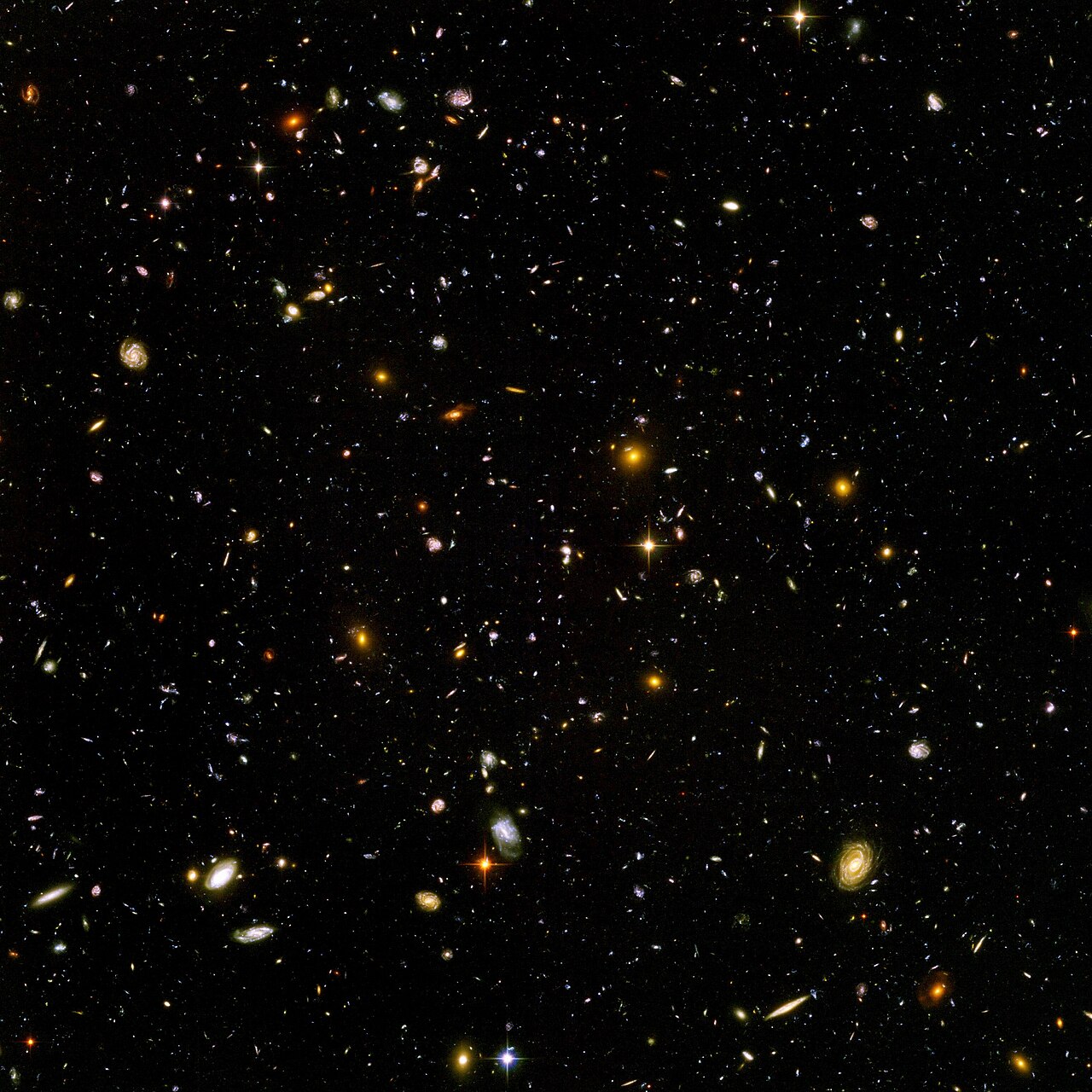The universe is the greatest mystery humanity has ever faced—a vast expanse of space, time, matter, and energy that both gives rise to and challenges our very existence. For thousands of years, people have gazed into the night sky, asking profound questions about what lies beyond and where we fit within it. Modern science, through physics, astronomy, and cosmology, has answered many of these questions while revealing even deeper mysteries. Understanding the universe means exploring everything from the birth of stars and galaxies to the nature of time, dark matter, and the limits of reality itself.
This article explores the most common and fascinating questions people ask about the universe, providing clear, scientifically grounded answers that capture both the beauty and complexity of cosmic truth.
What Is the Universe?
The universe is everything that exists: all matter, energy, space, and time. It encompasses the smallest particles known to physics and the largest cosmic structures spanning billions of light-years. Galaxies, stars, planets, and living beings are all part of the same vast continuum governed by physical laws.
In scientific terms, the universe can be defined as the totality of spacetime and its contents, including all forms of energy, radiation, and the physical constants that determine how these elements interact. According to the current cosmological model, known as the Lambda Cold Dark Matter (ΛCDM) model, the universe began approximately 13.8 billion years ago in an event called the Big Bang and has been expanding ever since.
But the word “universe” also carries philosophical weight. For humanity, it represents both our origin and our destiny, the ultimate context in which every question of existence is set.
How Did the Universe Begin?
The origin of the universe is one of science’s most profound discoveries. Observations of distant galaxies show that the universe is expanding—galaxies are moving away from each other, with more distant ones receding faster. This implies that in the distant past, everything was once compressed into an extremely dense, hot state. That initial state, expanding rapidly, is what we call the Big Bang.
Contrary to popular misconception, the Big Bang was not an explosion in space but rather an expansion of space itself. Space, time, and matter all emerged together from a singular point of infinite density—a condition where the known laws of physics break down.
The first moments of the universe were dominated by extreme temperatures and energies. In the first fraction of a second, fundamental forces—gravity, electromagnetism, and the nuclear forces—began to differentiate. Matter and antimatter were created, but most annihilated, leaving a tiny excess of matter that forms everything we see today.
As the universe expanded and cooled, subatomic particles combined to form atoms, leading to the formation of stars and galaxies hundreds of millions of years later. Cosmic microwave background radiation—faint light that permeates the universe—is a relic of this early phase, serving as a snapshot of the universe when it was only about 380,000 years old.
How Big Is the Universe?
The size of the universe is almost beyond comprehension. Because space has been expanding since the Big Bang, what we can see—the “observable universe”—is limited by the distance light has been able to travel in 13.8 billion years. Accounting for the ongoing expansion, the observable universe has a radius of about 46.5 billion light-years. That means the diameter of the observable universe is roughly 93 billion light-years.
However, the total universe is likely far larger—possibly infinite. We can only observe the portion of it from which light has reached us since the beginning of time. Beyond that cosmic horizon, space may continue indefinitely, filled with galaxies and energy we will never see.
Astronomers estimate that there are around two trillion galaxies in the observable universe, each containing hundreds of billions of stars. Between them lie immense stretches of mostly empty space filled with diffuse gas, dust, and dark matter.
What Is the Universe Made Of?
The universe is composed of different forms of matter and energy, but surprisingly, the kind of matter we can see—stars, planets, and people—makes up only a small fraction. According to cosmological measurements, about 5% of the universe consists of ordinary (baryonic) matter, 27% is dark matter, and about 68% is dark energy.
Ordinary matter includes protons, neutrons, electrons, and the atoms they form. It is the matter that interacts with light and forms the visible structures we observe with telescopes. Dark matter, by contrast, does not emit or absorb light but exerts gravitational effects on galaxies and clusters. Its existence is inferred from the way galaxies rotate and how they bend light from distant sources—a phenomenon known as gravitational lensing.
Dark energy is even more mysterious. It is the name given to the unknown force driving the accelerated expansion of the universe. While scientists know it exists through observation, its true nature remains one of the deepest puzzles in physics.
In essence, most of the universe is invisible and unknown—an elegant reminder of how much remains to be discovered.
What Is Space Made Of?
Space may appear empty, but it is far from nothing. The fabric of space is a dynamic entity described by Einstein’s general theory of relativity. According to this theory, space and time form a four-dimensional continuum—spacetime—whose geometry is curved by the presence of mass and energy.
Even the most “empty” regions of the universe contain virtual particles that pop in and out of existence, a consequence of quantum mechanics. This quantum vacuum gives rise to phenomena like the Casimir effect and Hawking radiation near black holes.
Space also acts as a stage for fundamental forces and fields. The electromagnetic field permeates all of space, as do the Higgs field and gravitational waves that ripple across the cosmos. In other words, the vacuum of space is a restless sea of invisible activity, humming with energy even when it seems empty.
How Old Is the Universe?
The universe is estimated to be about 13.8 billion years old, a figure determined by measuring the expansion rate of space and studying the oldest light in existence—the cosmic microwave background (CMB). The CMB provides a snapshot of the universe when it was young, and its uniform temperature allows scientists to calculate the rate of expansion backward in time.
Observations from missions such as Planck and WMAP have refined this age with remarkable precision. The exact value depends on parameters like the Hubble constant (the rate of cosmic expansion), which continues to be an active area of research due to slight discrepancies in measurements obtained from different methods.
What Came Before the Big Bang?
This is one of the most profound and debated questions in cosmology. According to general relativity, time and space began with the Big Bang, so the concept of “before” may not have any meaning in that context. However, several theories attempt to go beyond this classical description.
Some models propose that the Big Bang was not the absolute beginning but a transition from a previous state—perhaps a contraction phase of a previous universe in a cyclical “Big Bounce” scenario. Others suggest that our universe emerged from a quantum fluctuation within a larger multiverse.
Quantum gravity theories, such as loop quantum cosmology and string theory, seek to describe these earliest moments when gravity and quantum mechanics were unified. While none of these theories have yet been confirmed, they represent humanity’s attempt to answer what might be the ultimate cosmic mystery: the origin of existence itself.
Why Is the Universe Expanding?
The expansion of the universe is a consequence of the dynamics of spacetime. When Einstein’s field equations of general relativity are applied to a homogeneous and isotropic universe, they predict that space itself should either expand or contract depending on its energy content. Observations show that the universe is expanding—and that this expansion is accelerating.
The acceleration implies the presence of dark energy, an unknown form of energy that counteracts gravity on cosmic scales. This phenomenon was discovered in the late 1990s when astronomers studying distant supernovae found that galaxies were receding faster than expected.
In the current model, dark energy behaves like a cosmological constant—a uniform energy density that fills space and drives its expansion. However, its true nature remains uncertain, and alternative explanations such as modified gravity theories are also under investigation.
What Is a Black Hole?
A black hole is a region of spacetime where gravity is so intense that nothing—not even light—can escape its pull. Black holes form when massive stars exhaust their nuclear fuel and collapse under their own gravity, compressing their mass into an incredibly small volume.
At the center lies a singularity, a point where density and curvature become infinite according to general relativity. Surrounding it is the event horizon—the boundary beyond which escape is impossible. While the singularity itself cannot be observed, its presence is inferred from gravitational effects and radiation emitted by nearby matter.
Black holes are not cosmic vacuums that indiscriminately suck everything in. Objects must cross the event horizon to be trapped. Many black holes exist peacefully at the centers of galaxies, including our own Milky Way, whose central black hole, Sagittarius A*, has a mass four million times that of the Sun.
Recent breakthroughs, such as the Event Horizon Telescope’s imaging of a black hole’s shadow, have provided direct observational evidence of these extraordinary objects, confirming one of Einstein’s most remarkable predictions.
What Happens Inside a Black Hole?
The interior of a black hole is a domain where known physics ceases to function. Within the event horizon, all paths lead toward the singularity, where spacetime curvature becomes infinite. However, what actually happens there remains a mystery, as quantum mechanics and general relativity provide conflicting descriptions of such extreme conditions.
Some physicists believe that a full theory of quantum gravity would resolve the singularity into a finite structure, perhaps revealing that information is preserved rather than destroyed. This connects to the “black hole information paradox,” a major puzzle in theoretical physics.
The event horizon acts as a one-way barrier. From an external perspective, time appears to freeze for anything falling toward it, while from the infalling object’s perspective, time continues normally. These relativistic effects illustrate how black holes warp not only space but also the flow of time itself.
What Is Dark Matter?
Dark matter is a form of matter that does not emit, absorb, or reflect light, making it invisible to conventional telescopes. Its existence is inferred from its gravitational effects on visible matter, such as the rotation curves of galaxies and the motion of galaxy clusters.
In spiral galaxies, stars at the outer edges move faster than expected based on visible mass alone. This discrepancy can only be explained if a vast halo of unseen matter surrounds each galaxy. Cosmic microwave background measurements and gravitational lensing provide further evidence for dark matter’s presence.
Despite decades of research, scientists have not yet identified what dark matter is made of. The leading candidates include weakly interacting massive particles (WIMPs), axions, and sterile neutrinos. Alternatively, some physicists propose modifications to gravity rather than invoking unseen matter.
Dark matter plays a crucial role in cosmic evolution, acting as the gravitational scaffold around which galaxies and clusters form. Without it, the universe would look very different.
What Is Dark Energy?
Dark energy is the mysterious force causing the accelerated expansion of the universe. It acts as a kind of repulsive gravity, pushing galaxies apart at an ever-increasing rate. Discovered through observations of Type Ia supernovae, dark energy currently accounts for about two-thirds of the total energy content of the cosmos.
The simplest explanation for dark energy is the cosmological constant—a term Einstein introduced in his equations to represent a constant energy density filling space. In quantum theory, this may correspond to vacuum energy, but calculations of this energy differ from observations by an enormous factor, making dark energy one of the biggest unsolved problems in physics.
Other possibilities include dynamic scalar fields, known as quintessence, or entirely new physics beyond general relativity. Whatever its nature, dark energy shapes the universe’s destiny, determining whether it will expand forever, slow down, or tear itself apart.
Will the Universe Ever End?
The ultimate fate of the universe depends on its energy content and the nature of dark energy. If dark energy remains constant, the universe will continue to expand forever, leading to what is called the “heat death.” In this distant future, stars will burn out, galaxies will drift apart, and the cosmos will become dark and cold—a state of maximum entropy where no usable energy remains.
If dark energy weakens over time, gravity could eventually slow the expansion and trigger a “Big Crunch,” where the universe collapses back into a dense state, possibly giving birth to a new Big Bang. Conversely, if dark energy grows stronger, it could lead to a “Big Rip,” tearing apart galaxies, stars, and even atomic structures.
At present, observations suggest that the universe will expand indefinitely, approaching heat death over trillions of years. Yet the precise outcome depends on physics we do not yet fully understand.
Why Does the Universe Exist?
This question transcends physics, touching on philosophy and metaphysics. Science can explain how the universe evolved from its initial state but not necessarily why it exists in the first place. Some cosmological theories suggest that universes can arise spontaneously from quantum fluctuations, implying that existence may be a natural consequence of physics itself.
Others propose that our universe is one of many in a vast multiverse, each with different physical laws. In such a framework, our universe may simply be one that happened to produce conditions suitable for life—a concept known as the anthropic principle.
While these ideas remain speculative, they demonstrate humanity’s deep desire to understand not only how things work but why they are at all.
What Is Time?
Time is one of the most mysterious aspects of the universe. In physics, it is treated as a dimension—similar to space—woven into the fabric of spacetime. Yet our experience of time as a flowing sequence of moments is deeply tied to consciousness and thermodynamics.
Einstein’s theory of relativity revealed that time is relative: it flows differently depending on an observer’s speed and gravitational environment. A clock near a massive object ticks more slowly than one farther away—a phenomenon known as time dilation.
The direction of time, or the “arrow of time,” is linked to entropy—the measure of disorder. As entropy increases, systems evolve from order to disorder, defining a forward direction for time. The reason time flows this way remains an open question, tied to the low-entropy conditions of the early universe.
Are We Alone in the Universe?
One of humanity’s most enduring questions concerns life beyond Earth. With billions of galaxies, each containing billions of stars and potentially even more planets, it seems statistically unlikely that Earth is unique in hosting life.
The discovery of thousands of exoplanets—many in the habitable zones of their stars—has strengthened the possibility of extraterrestrial life. Astrobiologists search for biosignatures such as oxygen, methane, or water vapor in exoplanet atmospheres.
Intelligent life, however, remains elusive. The apparent contradiction between the high probability of alien civilizations and the lack of evidence for them is known as the Fermi Paradox. Possible explanations range from the rarity of life’s emergence to the self-destruction of advanced civilizations.
Even microbial life within our solar system—on Mars, Europa, or Enceladus—would revolutionize our understanding of biology and our place in the cosmos.
Why Does Anything Exist at All?
At the deepest level, the question of why anything exists is perhaps beyond the reach of science alone. Physicists can describe the laws that govern the universe, but not necessarily why those laws exist. Some theories suggest that existence is a quantum inevitability—that “nothingness” is inherently unstable, giving rise to spontaneous creation.
Others view the question as philosophical: perhaps existence needs no reason, or perhaps the universe simply exists because it can. The search for meaning in existence is what connects cosmology to human consciousness. Our curiosity about the universe is itself part of the universe—a reflection of matter becoming aware of itself.
Conclusion
The universe is both knowable and mysterious. Through centuries of observation and discovery, humanity has unraveled many of its secrets: how it began, what it is made of, and how it might end. Yet the more we learn, the more questions arise. Each revelation opens new frontiers of inquiry, from dark energy to the origins of time and the possibility of life elsewhere.
What makes these questions so profound is that they are not just about distant galaxies or abstract equations—they are about us. Every atom in our bodies was forged in stars, every breath we take is a product of cosmic evolution. To study the universe is to study ourselves, for we are made of its very substance, shaped by its history, and bound to its fate.
In the end, the universe is not merely something we observe; it is something we are part of. And as long as we continue to ask questions about it, the story of the universe—and our understanding of it—will never truly end.






